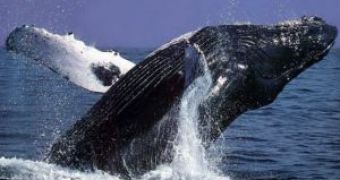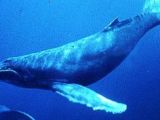Nature can almost reach perfection in its designs.
That's why researchers who wish to improve the performances of already existing techniques try to imitate the organisms, a domain named biomimetics.
Let's take as an example the humpback whale. An adult individual of this species weighs as much as 36 tons (79,000 pounds), much the same as a fully loaded truck. Even if it has a pretty stiff body, this 16 m (48 feet) long mammal, equipped with extremely long pectoral fins similar to wings, is remarkably agile in the water. In fact, these fins are highly unusual, no other cetacean (wales and dolphins) possesses such long fins. When this whale starts feeding, it swims upward, in spiral, under a shoal of fishes or crustaceans with which is going to feast.
The whale starts producing a cloud of bubbles, with a 1.5 m (5 ft) diameter, which pushes the little living things to the surface, where the whale swallow them at once.
The researchers were puzzled by how this marine creature, with such a rigid body, manages to describe such tight circles, apparently impossible to carry on. The secret was found in the bizarre fins and their shape.
The upward edge of the fins is not smooth, like a plane's wings (and like the wings of the other whales) but serrated, provided with a row of swells, called tubercles.
While the whale is swimming upward crossing the water, these tubercles increase the whale's ascendant force, defeating the water force exerted on its body. Due to the tubercles, the water's speed over the fins rises, forming a vortex around them, even when the whale rises almost perpendicularly.
If the edge of the fins were smooth, the whale could not rise in such tight circles, because under the fin would emerge froth and water vortexes, and the ascendant force would have been low. Based on this mechanism, engineers say that if the plane's wings adopted this model, there less flaps and other mechanic devices would be necessary to modify the air flux. Such wings would be more secure and easier to care. John Long, a biomecanics specialist, says that one day we will see "only planes with wings provided with tubercles similar to those on the fins of the humpback whale."

 14 DAY TRIAL //
14 DAY TRIAL // 
